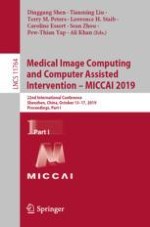2019 | OriginalPaper | Buchkapitel
Active Appearance Model Induced Generative Adversarial Network for Controlled Data Augmentation
verfasst von : Jianfei Liu, Christine Shen, Tao Liu, Nancy Aguilera, Johnny Tam
Erschienen in: Medical Image Computing and Computer Assisted Intervention – MICCAI 2019
Aktivieren Sie unsere intelligente Suche, um passende Fachinhalte oder Patente zu finden.
Wählen Sie Textabschnitte aus um mit Künstlicher Intelligenz passenden Patente zu finden. powered by
Markieren Sie Textabschnitte, um KI-gestützt weitere passende Inhalte zu finden. powered by
